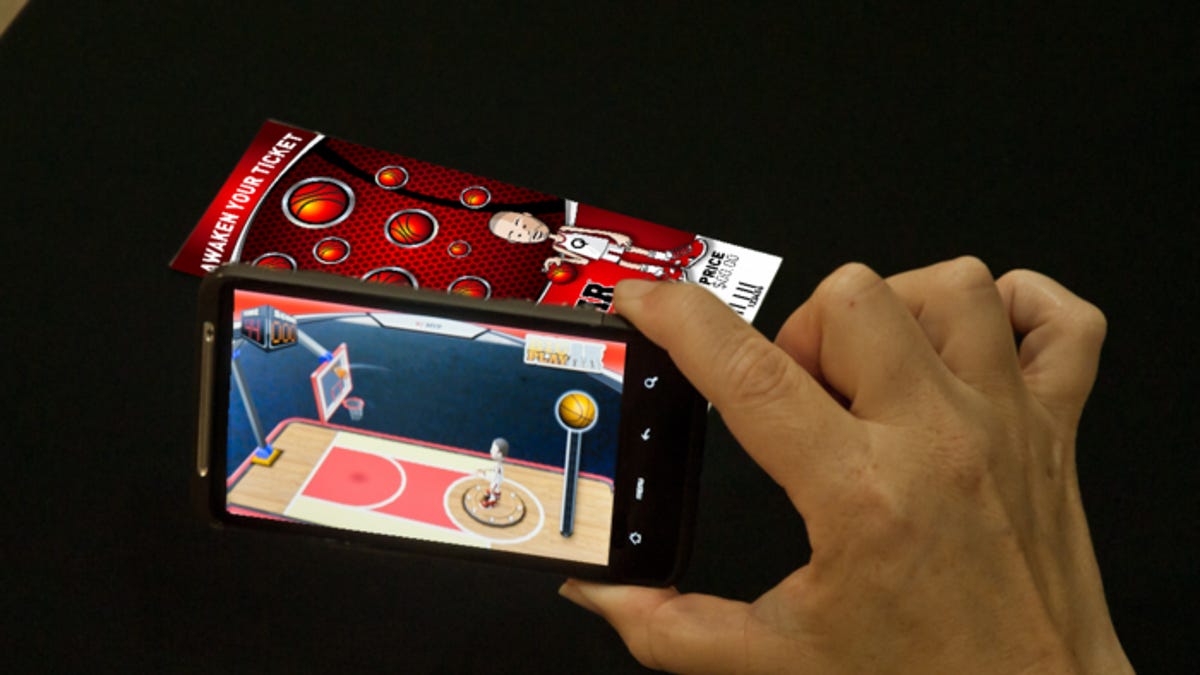How augmented reality is an opportunity for developers (Inside Apps)
CNET talks to Qualcomm's Jay Wright about turning augmented reality into more than a neat gimmick.

Augmented reality in smartphones is just getting started.
If you have a smartphone or Nintendo 3DS, you've probably played with some form of augmented reality, which superimposes graphics, words and other useful information over real-life images.
Yelp, for instance, offers its Monocle feature, allowing you to see local listings superimposed over the image captured by the phone's camera. It uses the compass and gyroscope to locate the specific listings, which move in and out of view depending on where you hold the device. The augmented browser Layar came to prominence by accomplishing the same feat on Android smartphones. Turn a Nintendo 3DS's camera on a special playing card, and a virtual monster leaps out on to the screen.
"It's a novel user interface that's got everyone interested," said Jay Wright, a senior director for Qualcomm focused on augmented reality.
The compass-based mapping feature you see now represents only the beginning of augmented reality's promise, Wright said. In an interview, he said the next generation of augmented reality will better integrate superimposed images with reality and work with a broader set of applications. He believes it represents an elegant way of marrying the tangibility of the physical world with information available in the digital world.
Qualcomm has been an early proponent of augmented reality. It has a vested interest in the field, because better use of augmented reality requires more powerful processors, driving demand for its line-up of SnapDragon mobile processors.
"We're providing the early building blocks for innovation," Wright said.
Looking to build an augmented reality app? Qualcomm has released its software development kit to help people take advantage of these capabilities. After a year of availability, 13,000 developers have signed up for the SDK, and there are 70 next-generation augmented reality apps in the Android market, he said.
These apps go beyond games and virtual listings. There are opportunities in education, marketing, technical instruction, and translation services for augmented reality. Likewise, there's an opening for ambitious developers looking to build augment reality apps.
Augmented reality would help supplement technical manuals. A mechanic looking at an airplane engine could point his phone at it to pull up schematics and data, further aiding his work. Or a person could point to a complicated gadget, and have a user manual pop up on the phone.
Likewise, a phone can be pointed at a sign or page written in a foreign language and have the translated text pop up on the screen.
There are examples of marketing tactics using augmented reality, but Wright said they would eventually be less gimmicky and more practical down the line. A person could eventually hold a phone up to an article of clothing at a retail store and instantly pull up variant styles, colors and sizes, and whether they are in stock.
Directing the phone at a toy dollhouse could pull up virtual characters occupying it.
"We're working on some really interesting things now," Wright said without going into too much detail into any of them.
There are still technical hurdles to surpass. More phones are starting to use a 1-gigahertz processor or faster, which is recommended to handle such tasks. The computer vision, he said, needs to be improved to it can scan three-dimensional objects rather than just flat images, which he expects is the catalyst to opening up the feature.
Augmented reality, which is rapidly drawing in people in the industry, remains in the fringes of smartphone features and consumer awareness.
"Everywhere we're demoing this, people are seeing it for the first time," he said.

